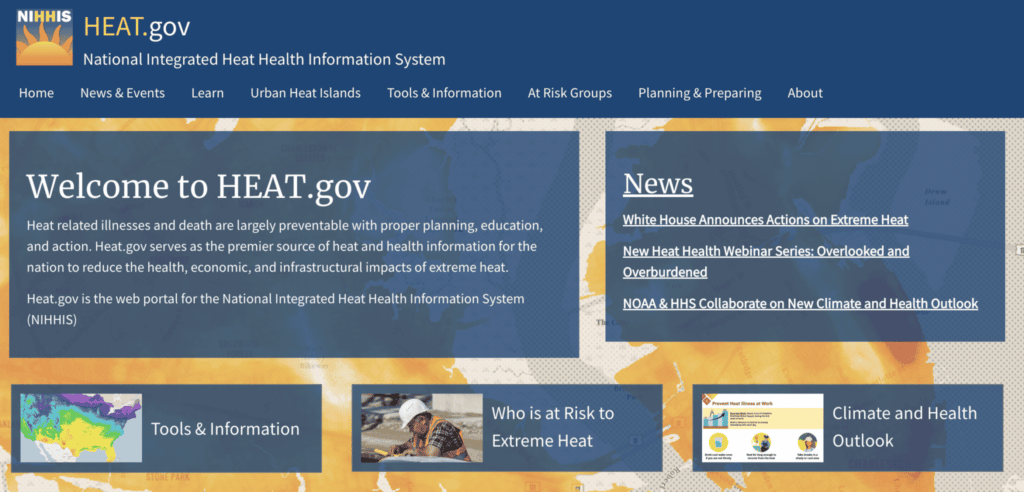Biden Administration Launches Heat.gov to Educate on Extreme Heat

 Why you can trust us
Why you can trust us
Founded in 2005 as an Ohio-based environmental newspaper, EcoWatch is a digital platform dedicated to publishing quality, science-based content on environmental issues, causes, and solutions.
With sky-high temperatures in many parts of the U.S. this summer, the Biden administration, through the National Integrated Heat Health Information System (NIHHIS), has just launched heat.gov, a website designed to educate about extreme heat risks and how to protect oneself from the dangerous effects of heatwaves.
According to heat.gov, there are currently over 44 million people in warning areas of extreme heat. The Pacific Northwest, which typically has milder temperatures, is facing record-breaking highs this week. Just last month, early heatwaves near the start of summer kept over one-third of the U.S. population indoors.

According to the National Oceanic and Atmospheric Administration (NOAA), extreme heat has been the No. 1 weather-related cause of deaths in the U.S. for the past three decades. With no relief in sight, the newly launched heat.gov aims to inform people how to stay safe in a warming world.
“Heat.gov leverages innovation and data to help deliver timely and accurate information to the public,” U.S. Secretary of Commerce Gina Raimondo said. “As extreme heat conditions impact millions of Americans, this site will help ensure that all our communities, including our most vulnerable, have access to the data, tools and resources they need to mitigate heat impacts.”
Heat.gov provides details on signs of heat-related illnesses, such as heat exhaustion or heat stroke, with advice on what to do if you or someone you know is exhibiting these symptoms. Signs of heat exhaustion include nausea, thirst, and dizziness, and action items include moving into a cooler area, sipping cool water, or loosening clothing. Signs of heat stroke may include confusion or unconsciousness, which will require a call to 911 for immediate assistance.
The website also includes tools that map extreme heat vulnerability, predict future extreme heat events, and track current heat-related health complications around the country. There is also general information about extreme heat, including definitions for various heat-related terms, including breakdowns of heat advisories vs. heat watches vs. heat warnings.
“Currently, few health systems have heat action plans and heat exposure is rarely integrated into real-time clinical health decision-making for patients,” said Dr. Cecilia Sorensen, associate professor and director of the Global Consortium on Climate and Health Education at Columbia University. “With more frequent, intense and longer lasting heat waves, there is an urgent need for increased health system preparedness to meet the growing burden of heat-related illness. These new tools will allow health systems easy access to the information they need to promote climate-readiness and heat-resiliency, ultimately improving patient and community health outcomes while reducing system-wide impacts and improving the efficiency of health systems.”
Subscribe to get exclusive updates in our daily newsletter!
By signing up, you agree to the Terms of Use and Privacy Policy & to receive electronic communications from EcoWatch Media Group, which may include marketing promotions, advertisements and sponsored content.

 233k
233k  41k
41k  Subscribe
Subscribe 




